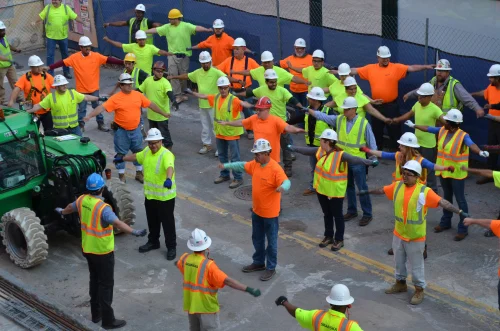Continuous training is pivotal in enhancing construction site safety, boosting worker confidence, and improving overall site efficiency. In the construction industry, where the stakes are high and the work environment is dynamic, ongoing training ensures that workers are not only aware of the latest safety protocols but also adept at implementing them in real-time. The construction field is characterized by a constantly evolving landscape of regulations, technologies, and best practices. Continuous training allows workers to stay updated with these changes, reducing the likelihood of accidents caused by outdated practices or unfamiliarity with new tools and equipment. One of the key benefits of continuous training is the significant increase in worker confidence. When employees are well-trained, they understand the safety procedures and how to handle potential hazards. This knowledge fosters a sense of preparedness and self-assurance, which translates into more effective and safe work practices. Confident workers are less likely to make mistakes due to uncertainty or fear, which can lead to a reduction in workplace accidents and injuries.

Additionally, when workers are confident in their abilities, they are more likely to adhere to safety protocols and encourage their peers to do the same, creating a culture of safety on site. Training programs that are conducted regularly also help in reinforcing safety messages and ensuring that they are fresh in workers’ minds. This reinforcement is crucial in maintaining high standards of safety and efficiency. For instance, periodic refresher courses on equipment operation, hazard recognition, and emergency response can significantly reduce the risk of accidents. These courses not only cover theoretical knowledge but also provide practical scenarios where workers can practice and hone their skills. Such hands-on experience is invaluable in helping workers react effectively to real-life situations. Moreover, continuous training contributes to site efficiency by ensuring that all workers are proficient in the use of new technologies and equipment. As construction techniques and tools advance, training helps workers integrate these innovations seamlessly into their workflows. This adaptability enhances productivity and reduces downtime caused by unfamiliarity with new systems or technologies.
Well-trained workers can operate machinery more efficiently, follow construction plans more accurately, and complete tasks more quickly, all of which contribute to overall site efficiency. Another aspect of continuous training is its role in improving communication and teamwork on construction sites click here. Training often involves collaborative exercises and team-building activities that help workers develop better communication skills and work together more effectively. This improved collaboration can lead to smoother project execution, fewer misunderstandings, and a more cohesive team effort, all of which are essential for maintaining site efficiency. In summary, continuous training is a critical component in enhancing construction site safety, worker confidence, and overall site efficiency. By keeping workers informed about the latest safety protocols and technological advancements, training programs help create a safer and more productive work environment. As a result, construction sites can benefit from fewer accidents, higher worker morale, and more efficient project execution, ultimately contributing to the successful completion of construction projects.
